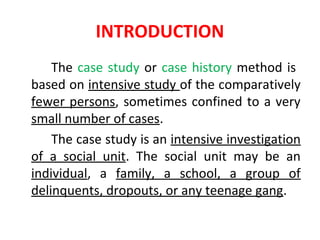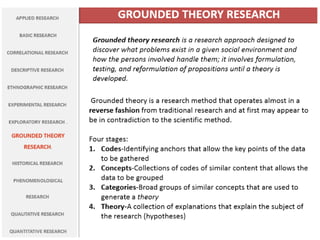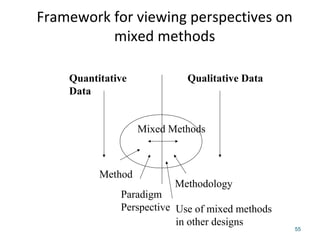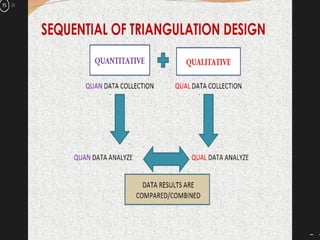This document discusses various research methods including descriptive research, case study, and experimental research. Descriptive research aims to examine current situations to establish norms by using methods like surveys. Case study involves an in-depth investigation of a small number of cases like individuals or groups. Experimental research aims to isolate and control conditions to observe the effects of manipulating independent variables on dependent variables.





































































